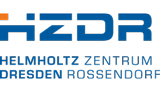Completed Projects of the Surface Processes Department
- Speciation and transfer of radionuclides in humans with special consideration of decorporation agents (RADEKOR), BMBF.
- Fundamental studies on the immobilization of actinides by incorporation into solid phases relevant for final disposal (AcE), BMBF.
- Development of a method for pre-activity and dose rate calculation of reactor-related components based on neutron fluence distributions (EMPRADO), BMBF.
- Decommissioning of reactor components and concrete shielding, e.g. WERREBA project
- Improved nuclear site characterization for waste minimization in decommissioning and dismantling operations under constrained environment (INSIDER)
- Behavior of long-lived fission and activation products in the near-field of a repository for nuclear waste and possibilities of their retention (VESPA II)
- iCross: Integrity of nuclear waste repository systems - Cross-scale system understanding and analysis
- Aquatic Actinide Chemistry and Thermodynamics at Elevated Temperature Conditions (ThermAc)
- Development and implementation of experimental methods for the improved modeling of uran-containing saline solutions (EDUKEM)
- r4 – Economically strategic materials: Rare Earth Elements Metallurgy-Advanced methods for optimized extraction and beneficiation by ion-adsorption clays (SEM²)
- Ion Transfer from Surface to Crystal: Mechanisms of Pollutant Trappting (POLLTRAP)
- Verhalten langlebiger Spalt- und Aktivierungsprodukte im Nahfeld eines Endlagers und Möglichkeiten ihrer Rückhaltung (VESPA)
- Surface processes of Np species on selected mineral oxides - From sorption to precipitation. Vibrational spectroscopic investigations

